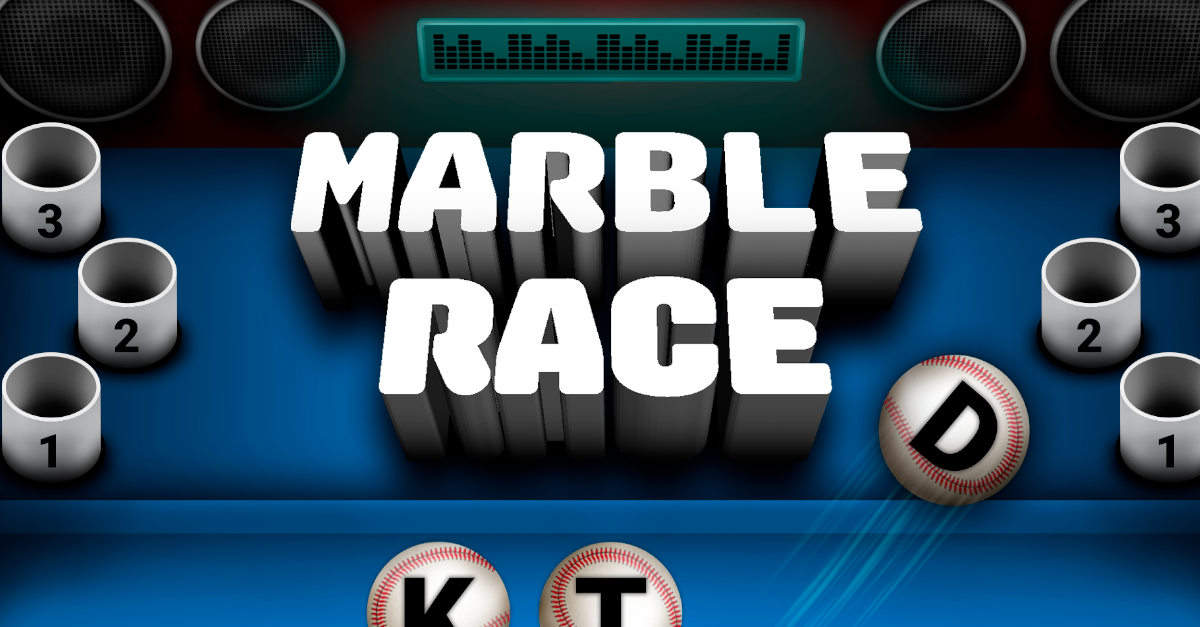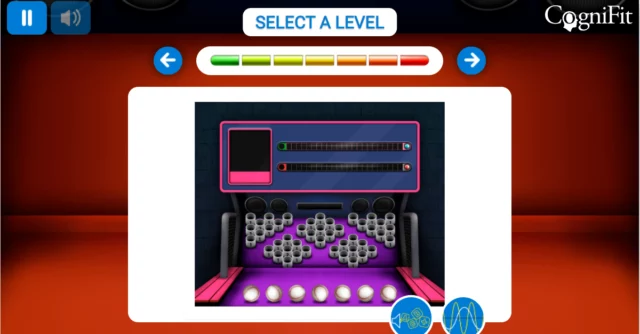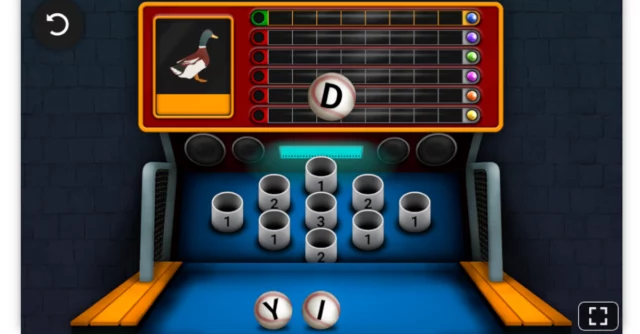
Marble Race – Like Skee-Ball but with a Big Brain Twist
You’ve seen those games in arcades, fairs, or on television? The long ramps with the tiny cylinders at the end – and the impossible high-point one right in the middle.
Well, our amazing creative team at CogniFit has made another brain-exercising game that’s going to flex your Auditory perception, Estimation, Hand-eye Coordination, and Naming functions – all within the idea of those Skee-ball games.

Let’s take a closer look at how you play as well as each brain process you’ll build and how they’re important.
How to Play Marble Race
After a quick audio check, you’ll find yourself on the instruction level screen. Here, you’ll get some tips as well as the option to choose what level of difficulty to start on.
Now, it might be tempting to jump to the end. But, trust us, it’s always a good idea to start at lower levels to get a feel for how things work. Then you can work your way up.
In front of you will be Skee-ball holes. In the upper left corner, there will be a blank section. And in the right corner, there will be a row with four colored marbles. Yours is the one at the very top. The others are your “competitors” – and this is your Marble Race.

- Listen to the sound at the beginning of each round.
- At lower levels, you’ll also get an image to help you.
- Next, select the ball that has the first letter of the word associated with that sound.
- Click it with the mouse and then try to toss it towards one of the holes.
- The higher value, the more points you get, and the faster your marble moves along the track.
As levels get harder, there will be more challenges…
- More background noise to distract you
- No pictures to help you out
- More Skee balls with letters to choose from
- More holes with lower values
But don’t worry. You can stay at any level you want for as long as you want! The point is to exercise key brain functions and nurture those neural networks! Let’s look at what processes Marble Race helps…
Auditory Perception
When you hear an elevator ding, signaling you’ve reached your floor. Or, you hear a beep or vibrating pulse on your phone telling you there’s a new message. These may seem like simple things.
But in fact, it’s a long string of complicated processes that happens. And honestly, one that would make anyone appreciate the beauty of our brains.
First, the sound wave reaches our inner ears where it activates certain cells. Then, this information travels through different parts of our neural network. Once it reaches the auditory cortex in the temporal lobes, the data can be “worked with.” But how?
It needs to analyze the tone, timbre, intensity, and duration of the sound wave. For example, a quick horn honk vs a long one.

Estimation
Estimation is one of our most important neuropsychological functions, as many of our daily activities depend on our ability to estimate speed, distance, or time. Estimation could be thought of as the mental process that allows us to predict or create a response when there is no other solution.
- Distance Estimation helps us not bump into people
- Speed Estimation allows us to drive without accidents
- Movement Estimation is what allows people to play sports
- Time Estimation lets us calculate the time between two events
In Marble Race, you exercise your Estimation skills by trying to throw the ball in the higher-point holes.
Hand-eye Coordination
This brain function is needed for nearly everything we do. It’s our brain’s ability to link our eyes and our hands together. When we write, play sports, type on a keyboard, put a key in a lock, shake hands with someone, etc. One very important one is while driving.
What most people don’t realize is that having poor vision or motor skills on their own isn’t what affects hand-eye coordination. It’s when we have to use them together is when problems occur.

Naming
Naming is our ability to refer to an object, person, place, concept, or idea by its proper name. To name an object, you need access to your internal dictionary, find the specific word that you’re looking for, and say it out loud. This is done in three systems.
- Phase 1 (the semantic system): Recovering information about the object that you want to name. For example, if you see an old classmate on the street, you identify that he was a classmate, that he was in your x class, and that he was friends with John, Tim, and Bill.
- Phase 2 (phonological lexical system): Recovering the best word for the object or idea. Using the same example, your old classmate’s name was Jeff, which would make it the most appropriate name to call him. This is the key process in Naming.
- Phase 3 (phoneme storage): Recovering each of the phonemes that make up the chosen word. For example, Jeff would be “/j/, /e/, /f/”.
These three phases are independent, which means that one of them can be altered without affecting the others. As such, the ability to remember a specific word is unrelated to the information that you have about the object that you want to name.
Naming helps us in many ways – taking tests, meeting friends, doing word games, or even following orders.
Marble Race Conclusion
This game is another great addition to CogniFit’s ever-growing portfolio of brain exercises. All you need is 20 minutes a day, 3 times a week! So, why not integrate Marble Race and see if you like it?














